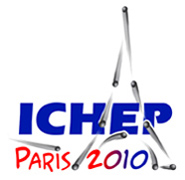Speaker
Prof.
Dejan Stojkovic
(SUNY at Buffalo)
Description
Stellar evolution from a protostar to neutron star is of one of the best studied subjects in modern astrophysics. Yet, it appears that there is still a lot to learn about the extreme conditions where the fundamental particle physics meets strong gravity regime. After all of the thermonuclear fuel is spent, and after the supernova explosion, but before the remaining mass crosses its own Schwarzschild radius, the temperature of the central core of the star might become higher than the electroweak symmetry restoration temperature. The source of energy, which can at least temporarily balance gravity, are baryon number violating instanton processes which are basically unsuppressed at temperatures above the electroweak scale. We constructed a solution to the Oppenheimer-Volkoff equation which describes such a star. The energy release rate is enormous at the core, but gravitational redshift and the enhanced neutrino interaction cross section at these densities make the energy release rate moderate at the surface of the star. The lifetime of this new quasi-equilibrium can be more than ten million years, which is long enough to represent a new stage in the evolution of a star.
Primary author
Prof.
Dejan Stojkovic
(SUNY at Buffalo)




